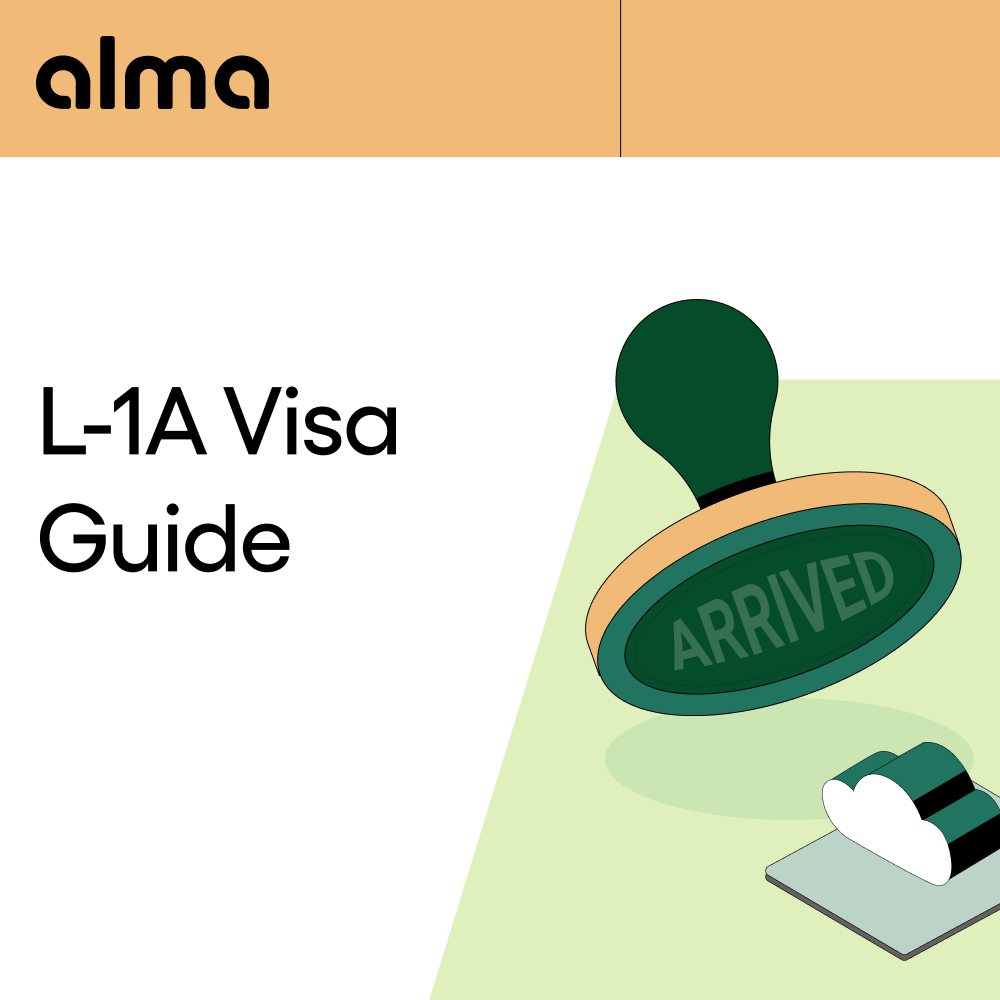- Satya Nadella arrived in the U.S. in 1988 as an international student and navigated the F-1 to H-1B pathway that remains common for tech professionals today
- Indian nationals received 71% (283,397) of all H-1B visas in fiscal year 2024, illustrating how the 1965 Hart-Celler Act transformed American immigration demographics
- Nadella made the extraordinary sacrifice of voluntarily relinquishing his Green Card in 1994 to switch to an H-1B visa—enabling his wife Anupama to join him in the U.S. more quickly under complex immigration rules
- The median H-1B worker earned $108,000 in 2021, demonstrating the high-skill nature of the program
- Personal experiences—including raising a son with cerebral palsy—shaped Nadella's empathy-centered leadership philosophy that transformed Microsoft's culture and drove unprecedented market value growth
- The Immigration Act of 1990 created the H-1B program and increased employment-based visas from 54,000 to 140,000 annually, establishing the legal framework for skilled immigration
Satya Nadella's path from a graduate student in Milwaukee to CEO of Microsoft represents one of the most compelling immigration success stories in American technology. Born in Hyderabad, India, Nadella navigated the complexities of F-1 student visas, H-1B work authorization, and employment-based immigration to build a career that would transform a $311 billion company into a $3 trillion enterprise. His journey reflects both the opportunities and challenges of the U.S. immigration system for highly skilled professionals—opportunities that Alma's immigration services help today's tech professionals access with transparent pricing, expert attorneys, and a 99%+ approval rate.
Who Is Satya Nadella? From Hyderabad to Silicon Valley
Born on August 19, 1967, in Hyderabad, India, Satya Nadella grew up just two years after the Hart-Celler Act abolished discriminatory immigration quotas. Before 1965, only 100 Indians could enter the United States annually with virtually no path to permanent residency—a restriction that would have prevented his eventual journey.
Nadella's educational foundation began at the Manipal Institute of Technology, where he earned his bachelor's degree in electrical engineering in 1988. That same year, he made the decision that would alter his life trajectory: traveling to the United States to pursue graduate studies at the University of Wisconsin-Milwaukee, where he completed his master's in computer science in 1990.
The timing proved critical. The Immigration Act of 1990 had just established the H-1B visa program and increased employment-based immigration slots, creating opportunities for graduates like Nadella to transition from student status to professional employment. After a brief stint at Sun Microsystems, he joined Microsoft in 1992 as a program manager—beginning a career that would span over three decades.
Early Life in India and Family Background
Nadella's father worked as an IAS (Indian Administrative Service) officer, while his mother taught Sanskrit, creating an environment that valued both technical education and cultural heritage. This foundation, combined with India's massive post-independence investment in technical education institutions, positioned him within what author Anita Raghavan termed the "Twice Blessed" generation—benefiting from both India's independence movement and America's civil rights victories that opened immigration doors.
Satya Nadella's Immigration Journey: The Path to Permanent Residency
The mechanics of Nadella's immigration pathway illustrate how the U.S. system channels international talent into American innovation. His journey followed the classic student-to-professional arc:
- 1988: Entered on F-1 student visa for graduate studies
- 1990: Completed master's degree, likely utilized Optional Practical Training (OPT) for initial employment
- Early 1990s: Transitioned to H-1B work visa sponsorship, eventually obtained Green Card
- 1994: Voluntarily relinquished permanent residency, switched back to H-1B status
- Post-1994: Regained permanent residency through employer sponsorship
The most remarkable chapter came in 1994, one year after marrying Anupama. Nadella made an unusual choice that drew campus notoriety: he voluntarily gave up his Green Card and switched to an H-1B visa. In his memoir "Hit Refresh," he explained: "What I didn't expect was the instant notoriety around campus. 'Hey, there goes the guy who gave up his Green card.' Anu was my priority. And that made my decision a simple one."
Immigration regulations at the time created significant delays for spouses of Green Card holders seeking to immigrate, whereas H-1B visa holders could bring spouses more expeditiously through H-4 dependent visas. This sacrifice highlights the complex personal decisions highly skilled immigrants face when navigating family reunification.
From Student Visa to Work Authorization
The H-1B program Nadella utilized was established by the Immigration Act of 1990, which permitted the entry of 20 million people over the next two decades—the largest influx in any 20-year period since the nation's founding. The visa category specifically targets "specialty occupations" requiring theoretical and practical application of highly specialized knowledge and at least a bachelor's degree.
Today's professionals following similar paths can access Alma's H-1B petition services for $3,500 for cap or cap-exempt filings, with guaranteed two-week document processing and comprehensive support including up to three free attorney consultations per case.
Career Trajectory: From Sun Microsystems to Microsoft CEO
Nadella's professional journey illustrates how sustained work authorization enabled decades of career building within a single organization:
- 1992: Joined Microsoft as program manager after brief Sun Microsystems tenure
- 2011-2013: Led Cloud and Enterprise division, growing revenue from $16.6 billion to $20.6 billion
- February 4, 2014: Appointed as Microsoft's third CEO in company history
- 2014-2018: Company revenue increased from approximately $86.8 billion (FY2014) to $110.4 billion (FY2018)
- 2014-2025: Market capitalization surged from approximately $311 billion to $3 trillion
This 22-year tenure at Microsoft before becoming CEO required continuous valid immigration status—first through H-1B renewals (limited to six years without Green Card sponsorship), then through employment-based permanent residency. The achievement underscores why early Green Card planning proves critical for long-term career development.
Indian Immigrants in USA Tech: The Broader Context of Nadella's Story
Nadella's success reflects broader patterns of Indian immigrant achievement in American technology. The phenomenon stems from two major historical developments: India's massive post-independence investment in technical education, and the 1965 Hart-Celler Act that abolished discriminatory national-origins quotas.
Indian-American CEOs Transforming Silicon Valley
Notable parallel trajectories include:
- Sundar Pichai: Google/Alphabet CEO, IIT Kharagpur to Stanford pathway
- Shantanu Narayen: Adobe CEO, similar H-1B to permanent residency journey
- Arvind Krishna: IBM CEO, IIT Kanpur to University of Illinois pathway
Research shows that approximately one-third of immigrant-founded Silicon Valley startups were founded by Indians, compared to roughly 23% by Chinese immigrants—despite both groups utilizing similar immigration pathways.
H-1B Visa's Role in Tech Innovation
The concentration of Indian nationals in H-1B approvals reflects both demand-side and supply-side factors. In fiscal year 2024, Indian nationals received 283,397 H-1B visas, representing approximately 71% of all approvals.
This dominance stems from:
- India's large pool of English-speaking, technically trained graduates
- Established recruitment pipelines between U.S. tech companies and Indian institutions
- Immigration law expertise within Indian professional networks
- Success stories like Nadella's motivating similar pathways
Professionals from India and other countries pursuing O-1 extraordinary ability visas ($8,000 for new petitions), EB-1A extraordinary ability green cards ($10,000), or EB-2 NIW national interest waivers ($10,000) can access Alma's personalized attorney support with transparent pricing and high approval rates.
The Modern Immigration Path: How Today's Tech Professionals Follow Nadella's Route
While Nadella's journey occurred during the 1990s and early 2000s, today's professionals face both similar frameworks and new challenges.
Current H-1B Lottery Realities
The registration system introduced in recent years created new dynamics:
- Registration fee: Petitions submitted after September 21, 2025, 12:01 AM, will now require a $100,000 payment to accompany any new H-1B visa petitions (details and legal challenges are unfolding, check official guidance before filing)
- Lottery odds: For FY 2024, USCIS received 780,884 registrations and selected 110,791 to meet the statutory cap of 85,000 (65,000 regular cap + 20,000 advanced degree exemption)
- Timeline: March registration, April/May selections, October start dates
- Processing: Premium processing available for expedited decisions
The H-1B lottery registration process represents the first hurdle, followed by full petition filing if selected.
Green Card Backlogs and Country-Cap Issues
The most significant challenge facing Indian nationals like Nadella today involves employment-based Green Card backlogs. Each country receives approximately 7% of the annual 140,000 employment-based immigrant visas, creating decade-long waits for high-demand countries.
This dynamic makes alternative pathways increasingly attractive:
- EB-1A extraordinary ability: No employer sponsorship required, though per-country limits apply (backlogs can occur for India and China)
- EB-2 NIW: Self-petitioning for those whose work benefits U.S. national interests
- O-1 visa: Temporary status without lottery, can lead to EB-1A eligibility
Alma offers EB-1A and EB-2 NIW petitions for $10,000 each, or $7,000 for those with approved O-1 visas—providing strategic pathways around employment-based backlogs.
Alternative Routes: O-1 and EB-1 Strategies
Modern tech professionals increasingly pursue O-1 extraordinary ability visas as alternatives to H-1B lottery uncertainty. The O-1 pathway requires demonstrating sustained national or international acclaim through:
- Published articles about your work
- Leadership roles in distinguished organizations
- Significant compensation relative to peers
- Original contributions of major significance
- Judging others' work in your field
Alma's O-1 petition services ($8,000 for new applications, $3,000 for extensions) provide comprehensive support including petition strategy, evidence compilation, and expert recommendation letters—with guaranteed two-week document processing turnaround.
Lessons from Nadella's Immigration Story for Today's Professionals
Nadella's journey offers practical insights for individuals navigating similar pathways:
Strategic Career Decisions That Enable Immigration Success:
- Pursue advanced degrees from U.S. institutions when possible for cap-exempt H-1B access
- Target employers with established immigration sponsorship track records
- Build specialized expertise qualifying for "specialty occupation" requirements
- Document achievements continuously for future O-1 or EB-1A eligibility
- Plan for permanent residency early, before H-1B six-year limits approach
Planning for Multi-Year Immigration Timelines:
Nadella's journey from 1988 student arrival to permanent residency (likely mid-1990s) spanned approximately 6-8 years even during less congested periods. Today's professionals should anticipate:
- 2-4 years: F-1 student status through graduate program
- 1-3 years: OPT period transitioning to H-1B
- 0-6 years: H-1B status while pursuing Green Card
- 2-10+ years: Employment-based Green Card processing (country-dependent)
When to Seek Expert Immigration Legal Counsel:
Critical decision points requiring professional guidance include:
- Initial visa strategy selection (F-1 vs. direct H-1B vs. O-1)
- H-1B lottery strategy and backup planning
- Green Card category selection (EB-1 vs. EB-2 vs. EB-3)
- Job changes during pending immigration applications
- Family-based immigration coordination
Alma's expert attorneys provide free consultations to explore visa options and develop personalized immigration strategies, combining speed (guaranteed two-week document processing), excellence (99%+ approval rate), and care (full transparency and case tracking).
The Empowerment of Informed Planning
Perhaps the most important lesson from Nadella's story: immigration success requires both patience and strategic action. His willingness to sacrifice his Green Card for family priorities, while unusual, demonstrates that immigration decisions extend beyond pure career optimization.
In a 2017 interview, Nadella identified immigration reform as his top policy priority, stating: "I am definitely gung-ho about our ability as America to work this out in a way that we can get to an immigration policy that is enlightened, that is in line with our own long-term competitive interests."
For today's professionals, that enlightened approach begins with understanding available pathways, leveraging expert support, and maintaining flexibility as policies evolve. Whether following the traditional H-1B route, pursuing O-1 extraordinary ability status, or self-petitioning through EB-2 NIW, success requires combining preparation with persistence—the same qualities that carried Nadella from Hyderabad to the helm of one of the world's most valuable companies.
Frequently Asked Questions
While Nadella's exact initial visa status at Microsoft isn't explicitly documented in public sources, he most likely utilized H-1B work authorization after completing his Optional Practical Training (OPT) period following his 1990 master's degree. The timeline suggests he obtained permanent residency (Green Card) during his early Microsoft years, which he then voluntarily relinquished in 1994 to switch back to H-1B status—an extraordinary decision made to accelerate his wife Anupama's immigration under regulations favoring H-4 dependent spouses over spouses of permanent residents at the time.
The Immigration Act of 1990 created the H-1B visa classification specifically for "specialty occupations" requiring bachelor's degrees or higher, replacing the previous H-1 category with more favorable terms. The legislation increased annual employment-based immigrant visas from 54,000 to 140,000, expanding pathways for workers like Nadella to transition from temporary status to permanent residency. Passed just months after Nadella completed his master's degree, this law established the legal framework that enabled his 22-year Microsoft tenure before becoming CEO—a trajectory requiring sustained valid immigration status throughout.
The most impactful reforms would address employment-based Green Card country quotas that create decade-long backlogs for Indian and Chinese nationals while other countries have available visas going unused. Current law caps each country at approximately 7% of the 140,000 annual employment-based immigrant visas regardless of demand, creating processing times of 10+ years for Indian EB-2 and EB-3 categories. Additional beneficial changes include expanding the H-1B annual cap beyond 65,000 base plus 20,000 advanced degree slots (unchanged since 1990 despite massive tech sector growth), providing automatic work authorization for H-4 spouses rather than requiring separate applications, and creating paths to permanent residency that don't require continuous employer sponsorship—reducing vulnerabilities during economic downturns.
Public sources don't document specific instances of discrimination Nadella faced related to immigration status. However, his memoir "Hit Refresh" and public statements emphasize the psychological impact of immigration uncertainty, including the campus notoriety when he voluntarily relinquished his Green Card in 1994. The broader context suggests challenges common to all employment-based immigrants: dependence on employer sponsorship for legal status, family reunification complexities, and navigating bureaucratic processes while building a career. Nadella has been vocal about immigration policy's importance, identifying it as his top policy priority in a 2017 interview and advocating for "enlightened" immigration approaches that strengthen American competitiveness while maintaining the nation's historical openness to talent.
%20(1).png)


.png)

.png)


